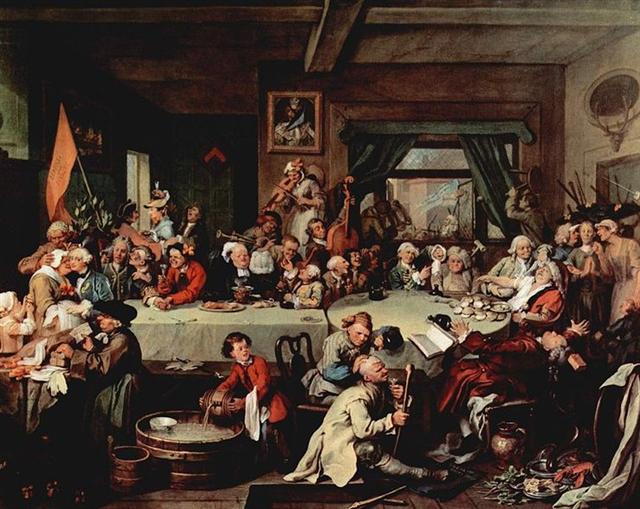|
ADDENDA
10f. In April 25 (115) the Chorti diviners began to raise their sky roof - and they had to be careful in order to secure regular rains ahead: ... Later on in this series of rituals, the Chorti go through a ceremony they call raising the sky. This ritual takes place at midnight on the twenty-fifth of April and continues each night until the rains arrive. In this ceremony two diviners and their wives sit on benches so that they occupy the corner positions of the cosmic square. They take their seats in the same order as the stones were placed, with the men on the eastern side and the women on the west. The ritual actions of sitting down and lifting upward are done with great precision and care, because they are directly related to the actions done by the gods at Creation. The people represent the gods of the four corners and the clouds that cover the earth. As they rise from their seats, they metaphorically lift the sky. If their lifting motion is uneven, the rains will be irregular and harmful ... ... although I have no definitive documentation in my Polynesian word list regarding oona there seems to be an aura of negation and being careful ... We should shift our attention to the era of Bharani in order to obtain a better understanding:
415 (Bb5-14) + 51 = 466 (= 365 + 101). Perhaps this pair of glyphs were drawn alike in order to visualize the distinction between the current date of April 1 and an ancient position which was to be counted not from March 21 (80) but from March 31 (90). Furthermore, the Pope Gregory XIII had stolen 10 days, otherwise Beid would have been at *52.
... Gregory dropped 10 days to bring the calendar back into synchronisation with the seasons. Accordingly, when the new calendar was put in use, the error accumulated in the 13 centuries since the Council of Nicaea was corrected by a deletion of ten days. The Julian calendar day Thursday, 4 October 1582 was followed by the first day of the Gregorian calendar, Friday, 15 October 1582 (the cycle of weekdays was not affected) ... ... However, the Gregorian calendar was not accepted at once everywhere: ... The reform was adopted initially by the Catholic countries of Europe. Protestants and Eastern Orthodox countries continued to use the traditional Julian calendar and adopted the Gregorian reform after a time, for the sake of convenience in international trade. The last European country to adopt the reform was Greece, as late as 1923 ... Britain and the British Empire (including the eastern part of what is now the United States) adopted the Gregorian calendar in 1752, by which time it was necessary to correct by 11 days. Wednesday, 2 September 1752, was followed by Thursday, 14 September 1752 ... If the Gregorian calendar was adopted on Easter Island around my assumed era for rongorongo it ought to have been necessary to correct the old view with 12 days. And after such an earth shaking event much effort must have been used in order to translate the old and well known Julian space-time structure into that which was brought to the island by the Europeans. This could account for why side b on the G tablet carries 242 glyphs, because 2 * 115 (synodic cycle of Mercury) = 230 = 242 - 12.
The prominent back side (occiput) heads of 6 of these manu rere can be perceived and contrasted with that of the 7th - here presumably described as mortal due to the position at the left side of ihe tau.
.... Alcyone and Celaeno were both seduced by Poseidon. Maia, the eldest and most beautiful of the sisters, was seduced by Zeus and gave birth to Hermes; she later became foster-mother to Arcas, son of Zeus and Callisto. Zeus also seduced two others of the Pleiades: Electra, who gave birth to Dardanus, the founder of Troy; and Taygete, who gave birth to Lacedaemon, founder of Sparta. Asterope was ravished by Ares and became mother of Oenomaus, king of Pisa, near Olympia, who features in the legend of Auriga. Hence six Pleiades became paramours of the gods. Only Merope married a mortal, Sisyphus, a notorious trickster who was subsequently condemned to roll a stone eternally up a hill ...
|
||||||||||||||||||||||||||||||||||||||||||||||||||||||||||||||||||||||||||||









.jpg)